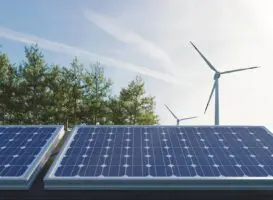At the moment, one of Australia’s most significant climate and energy research funding agencies, the Australian Renewable Energy Agency (ARENA), is in the midst of an existential fight.
That is not an unusual place to be for this organisation. It was created under the Labor governments of the late 2000s and early 2010s, and was a primary target of attack for the Abbott government that came afterwards.
After Abbott’s unsuccessful attempts to axe the body, the federal Coalition has been squeezing out the agency’s funding. That changed recently, as the government realised that instead of axing the body, or depriving it of oxygen, they could simply re-define it as an agency dedicated to funding the fossil fuel industry rather than renewables and zero emissions technologies.
The Labor party and the Greens have attemped to block the changes, designed to allow ARENA to fund carbon capture, fossil hydrogen and fossil gas under the guise of “low” emissions projects. But it isn’t looking good: the changes are likely to pass.
This is a major cog in the government’s approach to climate change. Instead of setting clear, short and long-term targets and developing a sectoral approach to achieving emissions reductions aligned with the Paris agreement, the only real effort is being put into directing government funds towards high-emissions industries so it can be spent on technologies extremely unlikely to lead to any substantial emissions reductions at any reasonable timescale.
The CCS black hole
A nice example: CCS has received several billion dollars of funding over the past few decades, in Australia. It’s pretty easy to illustrate exactly what we got, for that, in terms of emissions reductions:
If you think that looks like a ‘failure’ of CCS, you’re wrong. It did exactly what it was meant to do – it presented a promise of future emissions reductions, without actually resulting in any notable emissions reductions. It definitely captured (and continues to capture) billions in taxpayer’s dollars, but no real sacrifice or spend was required of the fossil fuel companies advocating it.
In talking up the bill, Liberal MP Dave Sharma specifically referenced the Gorgon CCS plant, Australia’s only operational carbon capture site. It’s a nice example because we can, due to the detail of Australia’s quarterly emissions data, show exactly how tiny the impacts are, compared only to the fugitive emissions from coal and gas mining in Australia:
Specific technologies and plenty of taxes
The mantra of the Morrison government is “technology, not taxes”. It’s a deeply ludicrous plea, for two reasons.
First, there is no real love for technology from the government. This can be seen from the deeply hostile response towards incentivising electric vehicles, or the lingering antagonism towards wind farms. Second, much of the funding for these policies come literally and directly from taxation.
Yes, it is true that only focusing on future climate research instead of deploying technology today is bad – but the government isn’t even really focusing on future climate research.
A recent report from the IEA outlines the core problem quite nicely: Australia’s research and development into energy boomed under the Labor government and collapsed under the current Liberal-National government. It’s pretty damn stark, when you look at the numbers:
The post 2013 dip is partly due to the winding up of several major programs, but none were replaced. That means the areas in which research would have actually been useful – like hard-to-decarbonise sectors, or nascent technologies – have fallen by the wayside.
Relative to the IEA’s other member countries, Australia comes second-last in terms of spending on energy RD&D budgets, only surpassing Mexico. Norway is first, for the year 2020.
 When the government announced their plan to make ARENA fund non-renewables, Australia’s gas lobby unsubtly announced that the decision put them in the “driver’s seat.” That is certainly true, but is there all that much left to drive? To them, it surely doesn’t matter: all they need is the glossy PDF. Anything that might actually result in reduced emissions would be a suboptimal outcome for them, so calling for increased funding or decarbonisation RD&D programs with real potential is something you won’t hear from the fossil fuel industry.
When the government announced their plan to make ARENA fund non-renewables, Australia’s gas lobby unsubtly announced that the decision put them in the “driver’s seat.” That is certainly true, but is there all that much left to drive? To them, it surely doesn’t matter: all they need is the glossy PDF. Anything that might actually result in reduced emissions would be a suboptimal outcome for them, so calling for increased funding or decarbonisation RD&D programs with real potential is something you won’t hear from the fossil fuel industry.
ARENA is likely to soon become co-opted into the heart of the government’s climate policy: empty protestations and promises instead of immediate, substantial action. CCS, fossil hydrogen and nature-based carbon offsets all will be used for this purpose; ‘look, we’re doing something’. It’s a sad moment for a formerly great agency.













